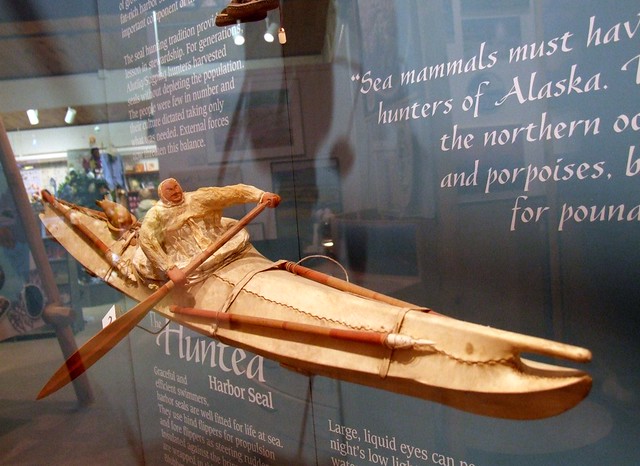
Kayaker
Here is a model of a hunter in his kayak.
Note the seal gut parka that doubles as a spray skirt fitting over the hole to the kayak.
Attached to the kayak are several harpoons waiting to be used with a naqua.
I suppose the oar could be stowed under one of the leather straps when necessary.
Riding on the back of the kayak is a sealskin float waiting to keep any game buoyant that might be stuck with a harpoon point.
The kayak itself is probably made from seal or, even better, walrus hide. The structural piece jutting out from the front of the kayak may also be helpful in looping the sinew attached to both the sealskin float and the injured or dead prey for hauling back to shore. This is only suggestion at the functionality of the kayak tip. I haven't seen or read that it has been used in that fashion.
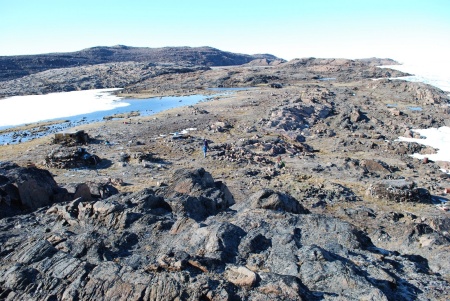
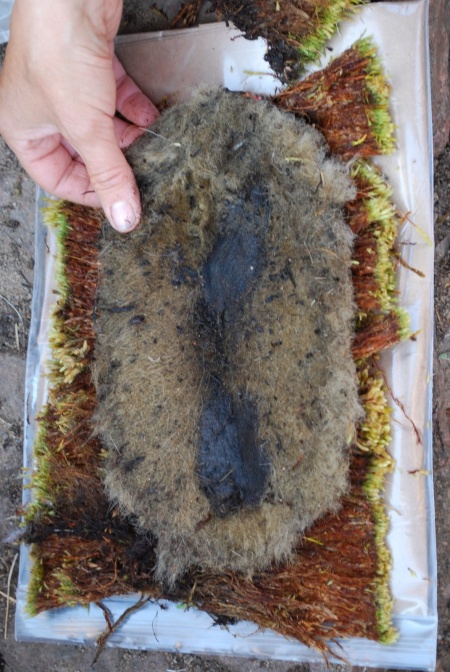
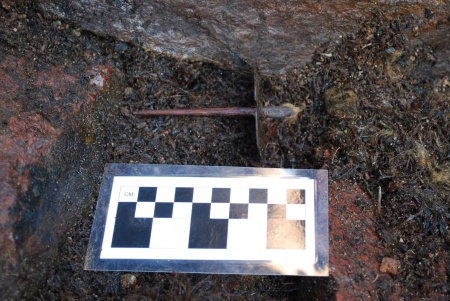
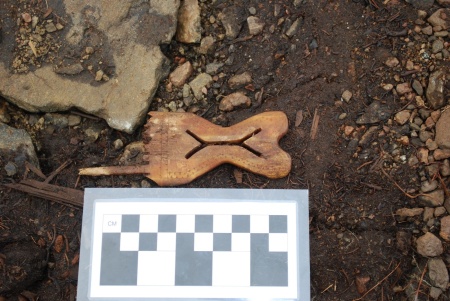
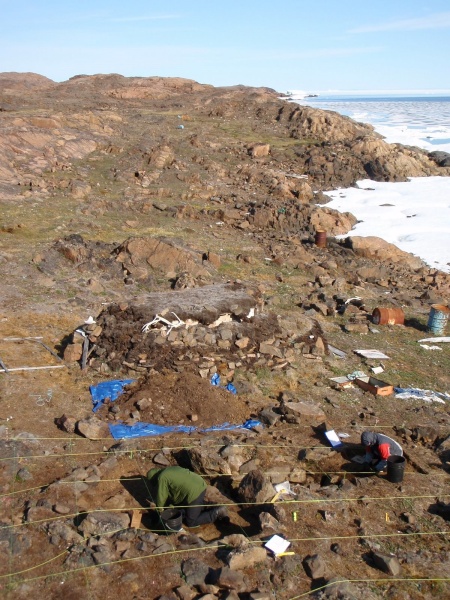
Attached to the kayak are several harpoons waiting to be used with a naqua.
I suppose the oar could be stowed under one of the leather straps when necessary.
Riding on the back of the kayak is a sealskin float waiting to keep any game buoyant that might be stuck with a harpoon point.
The kayak itself is probably made from seal or, even better, walrus hide. The structural piece jutting out from the front of the kayak may also be helpful in looping the sinew attached to both the sealskin float and the injured or dead prey for hauling back to shore. This is only suggestion at the functionality of the kayak tip. I haven't seen or read that it has been used in that fashion.
When Dr. Christyna Darwent, associate professor of archaeology at UC Davis, left her field research site in northwestern Greenland in a region known as Battlefield Land in late August, she and her team of seven had excavated artifacts that are hundreds of years old.

"The office." Site of the 2009 field work. Photo courtesy Christyna Darwent.
They lay buried in the remote village of Qaqaitsut, where prehistoric populations settled the rugged coast of Paris Fjord and later encountered Arctic explorers like Elisha Kent Kane in the mid-1850s and Robert E. Peary in the late 1800s-early 1900s.
Wrapped in the ubiquitous sphagnum moss for both cushioning and hydration, the objects accompanied Darwent to her California lab where they now reside in a refrigerator to begin the long and tedious process of drying.

Wrapping a skin in moss for protection and preservation during travel. Photo courtesy Christyna Darwent.
“We want the objects to dry very, very slowly so as not to shock the artifacts,” said Darwent this week in a phone interview from California, “as they have spent several hundred years frozen in the ground. It can take up to a year or two to get the objects ready for long-term preservation.”
The artifacts in question, which are ultimately destined for the Greenland National Museum in Nuke, consist of harpoons and carvings made out of walrus tusk, seal-skin clothing stitched together with strips of sinew or gut, boxes, hand drills and ropes fashioned out of strips of bow head-whale baleen.

One of the many unearthed artifacts from the 2009 field season. Photo courtesy Christyna Darwent.

Working with Dr. Genevieve LeMoine, curator and registrar of the Peary-MacMillan Arctic Museum at Bowdoin College in Maine, Dr. Darwent was on the second of a two-year National Science Foundation grant to excavate Thule/Inughuit sites with the goal to investigate the impact of contact during the transition from prehistoric (the period prior to written records) to historic (post written records).
“We are looking at what happens to people and their material culture when they encounter outside groups,” said Darwent. “What do they choose to incorporate, and what do they choose to ignore?”
For instance, the Thule opted to keep their centuries-proven seal-skin clothing instead of adopting the explorers’ wool, but they quickly integrated metal needles into their repertoire, likely eager to replace the traditional ones painstakingly carved out of walrus tusk.
The crew also uncovered several objects made from wood, a rarity, given that the only source is driftwood. Most impressive, said Darwent, were a bow strung with baleen string and a nearly complete harpoon with an ivory fore shaft and end piece and a wooden shaft. In addition, Darwent, a zoo archaeologist, looked for evidence of the species people were hunting and how they butchered their animals. They discovered a surprising number of objects.
“We’re scientists, but we get really excited when we find these well-preserved things,” said Darwent. “We were quite startled by the amount of objects; there were a lot more than the previous season. Part of it is the exceptional preservation.”
Archaeological relics stay well preserved in the Arctic, where cold temperatures dramatically slow decomposition, and many of the objects were shielded from the elements by the sod covering on the houses.

Nice view. People thousands of years ago also liked ocean front property. Photo courtesy Christyna Darwent.
Not only are the objects preserved, but so is everything else contained within the soil. Translation?
“We were working with decomposing organic material that smells very, very bad,” said Darwent. “It smells like a latrine, like rotting animal. We wore rubber gloves while digging through that layer.”
Today, with their fieldwork for this project complete, Darwent and LeMoine are creating a large synthetic report for the National Museum in Nuke that they aim to publish as a monograph. They are processing all of the artifacts collected over a two-year period, and although partially published in the journal Arctic Anthropology in 2007, they are currently completing the creation of detailed maps that inventory all of the archaeological resources in Battlefield Land documented between 2004 and 2009. The result will be a 5-panel poster for the Thule Museum in the northern village of Qaanaaq that explains how the Inughuit and their predecessors settled the landscape and where they chose to live over the past 4000 years.